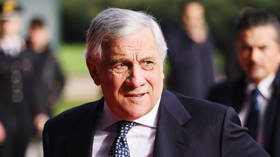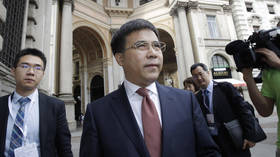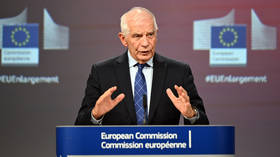Making sure Wall Street gets Fed

In an attempt to justify further cuts to social programs and other essential elements of the US budget, politicians and media demagogues have been fear-mongering Americans regarding the nation’s debt.
At the same time, the Federal
Reserve and the major financial institutions that control it,
literally laugh all the way to the bank.
While President Obama and his Democrat cheerleaders manage to portray themselves as the protectors of social programs preyed upon by right wing Republicans, the truth is that both parties have entered into an ideological partnership – one that serves the interests of Wall Street and the financial oligarchy.
Despite Obama’s public posturing, he and his administration have been engaged in a vicious campaign of austerity, gouging the social safety net while convincing Americans that it’s for their own good.
As President Obama stated in a radio address back in 2011, “To restore fiscal responsibility, we all need to share in the sacrifice…I believe we can live within our means and live up to the values we share as Americans…If we don’t act, a rising tide of borrowing will damage our economy, costing us jobs and risking our future prosperity by sticking our children with the bill.”
The coded language Obama employs here is critical to understanding the ideology and actions of the financial ruling class in the United States. By establishing the notion of ‘sharing in the sacrifice’, Obama is transferring the burden of the continued economic crisis away from the financiers and speculators who created it, and on to the backs of working people and the poor.
So in Obama’s America, those who work hard and earn a paycheck to support themselves and their families must pay for the malfeasance of those on Wall Street and elsewhere.
This idea of ‘shared responsibility’ is central to understanding how the two major parties, Democrats and Republicans, work in concert under the illusion of conflict to achieve the goals set out for them by the Wall Street banks. On the one hand, policymakers have the unenviable task of selling austerity and continued decline in standard of living to working people already reeling from nearly six years of economic hardship.
At the same time that the politicians are convincing ordinary Americans that such sacrifices are necessary, the Federal Reserve (Fed) continues its policy of ‘quantitative easing’ (QE) – a prescription by which the Fed buys bonds and major financial institutions become the recipients of extraordinarily low-interest (essentially no interest) credit from the Fed. This QE policy of ‘free money’ for banks and other financial institutions has become the bedrock of the current economic order, and one that is having, and will continue to have, wide-ranging and dangerous ramifications in the US and worldwide.
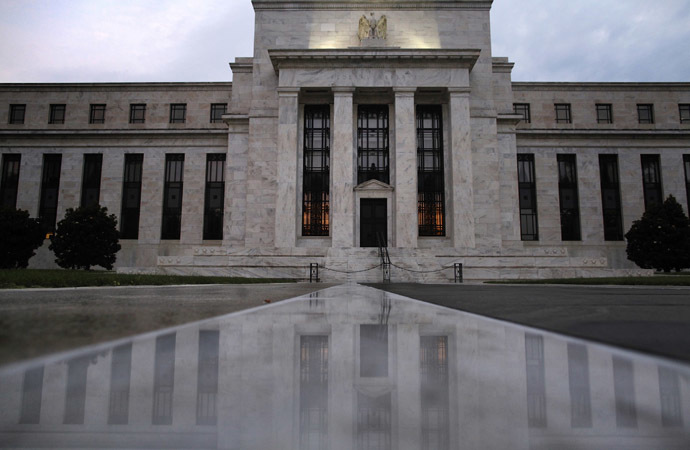
Don’t ease me bro!
The Federal Reserve’s policy of Quantitative Easing (now in its third phase ‘QE3’), a move spearheaded by Fed Chairman Bernanke, is a pseudo-intellectual attempt to obscure the fact that we are witnessing a redistribution of wealth upwards, away from ordinary working people and communities, and into the pockets of the financial elite. The liquidity created by the Fed is meaningless as the banks take their QE funds offshore, speculating with it throughout world markets, rather than using that liquidity to increase lending to small business owners and working people.
However, aside from being an ill-conceived and morally bankrupt policy, quantitative easing simply does not work in the way Bernanke and others claim it does. In fact, Bernanke himself noted back in 1988 that banks are unlikely to increase lending when external sources of funding exist.
So despite the bluff and bluster, even the architect of QE admits that it doesn’t do what he claims it does. Then the question becomes: what is QE really for?
In fact, QE is a comprehensive strategy to save investors, major Wall Street banks and other insolvent financial institutions by infusing them with cash, allowing them to turn around and speculate on the international markets.
Renowned political economist Dr. Jack Rasmus has written: “Even potentially more dangerous than its predecessors, QE3 will be an open-ended tab of free money to investors, amounting to $40 billion a month for an undetermined number of months to come. It could therefore be an even greater subsidy to banks and investors, in terms of magnitude, than previous QEs… But QE3 will have no more effect on job creation, housing, or general economic recovery than has its predecessor QEs. QE is not about boosting jobs, housing, or the real economy. QEs are about subsidizing investors and boosting stock, bond, derivatives, and commodity futures markets and therefore the capital incomes and returns of investors, both individual and corporate.”
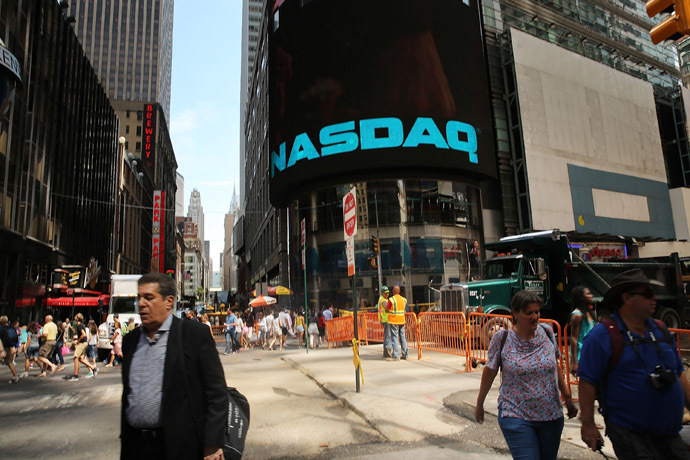
However, as the corporate media with its attendant ‘experts’ deceptively try to convince Americans and others around the world that quantitative easing is not only beneficial, but necessary, central bankers have been quietly trying to find a way out of the corner into which they have painted themselves. Although QE has provided a temporary solution (really a stop-gap measure) to the problem of liquidity and bank access to funding, the policy has also brought about serious obstacles. One of the most dangerous effects of QE has been effectively to create a dependency among investors on Fed policy. Nowhere is this dependency more plainly apparent than with the recent announcement of possible QE tapering.
In the summer of 2013, Bernanke sent US and international markets into a tailspin at the mere mention of a possible ‘tapering’, a gradual decrease in QE bond-buying. In fact, within minutes of Bernanke’s mention of the possibility of tapering, the Dow Jones industrial average fell by 1.4 percent, while the S&P 500 and NASDAQ indices fell 1.4 and 1.1 percent respectively.
The unavoidable conclusion to be drawn from these sharp losses is that investors of all kinds have become entirely dependent on QE policy merely to maintain the status quo. Like drug addicts, these investors are perpetually waiting for their next ‘fix’, operating in constant fear that their supply will simply run out. Also, like the long-term addict, these investors are seeing increasingly diminishing returns as even Fed monetary policy begins to wane in its impact.
The statements, views and opinions expressed in this column are solely those of the author and do not necessarily represent those of RT.
The statements, views and opinions expressed in this column are solely those of the author and do not necessarily represent those of RT.



